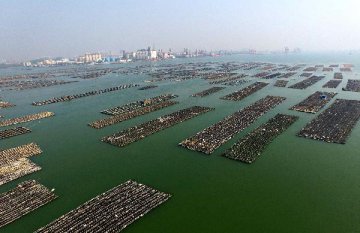Iron ore inventories at the 33 major Chinese seaports monitored edged up 0.61 percent week on week to 81.32 million metric tons (tonnes) as of October 26, according to the Xinhua-China Iron Ore Price Index (Xinhua-China IOP Index) released on Tuesday.
The index, compiled through research and analysis of 33 selected major seaports, shows that the price index for iron ore imports of 62 percent purity grade declined 2 points from a week before to 51 by October 26; and the index for iron ore imports of 58 percent purity grade dropped 2 points to 46.
During the period of October 20-26, prices of iron ore continued a downtrend. The iron ore futures traded on the Dalian Commodity Exchange (DCE) on October 22 even fell to a low in the month and edged up in the following trade day. Under the circumstances of the high output of the international mining producers and production control by the domestic steel mills, demand for the iron ore resources was limited, adding downward pressure to the ore price in the short term, said analysts.
Generally, prices of the imported iron ore were still under the downward pressure. According to the third-quarter report released by the Rio Tinto, a large international mining producer, its exports of iron ores in the period exceeded its output, showing its enthusiasm for production. However, the situation for domestic steel mills is not upbeat at present.
After October, more and more domestic steel mills have joined the campaign to reduce production, capping their demand for the raw material. Given this, prices of the imported iron ore still face downward pressure in the short term, analysts added.
Developed by Xinhua News Agency, the Xinhua-China Iron Ore Price Index (Xinhua-China IOP Index) is released every Tuesday on the Xinhua08 platform. The index closely tracks changes of the country's iron ore market on the basis of in-depth surveys of China's major sea ports, iron ore traders, and steel makers, as well as analysis of Customs statistics, and serves as a reference indicator that is able to reflect changes in iron ore stocks in China.
The original data was collected via the global data and information collection network of Xinhua and put together with comments from industry experts in the iron and steel production, wholesale, and retail sectors.





















Latest comments